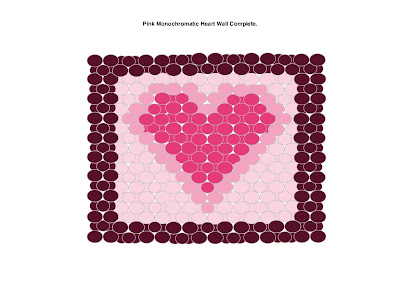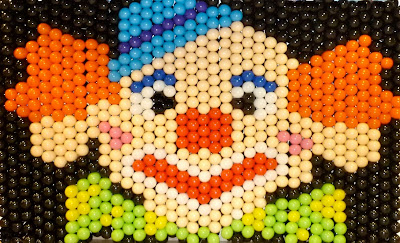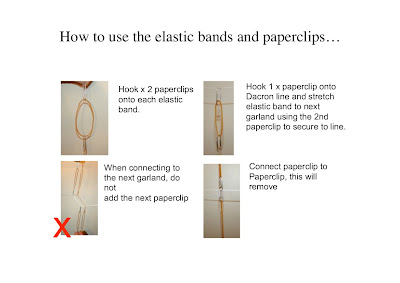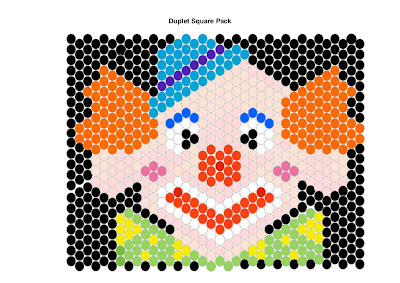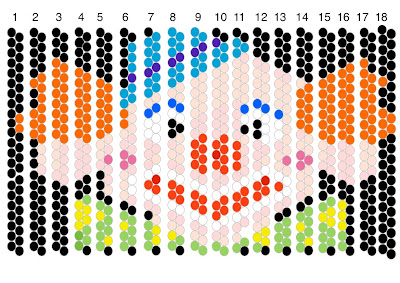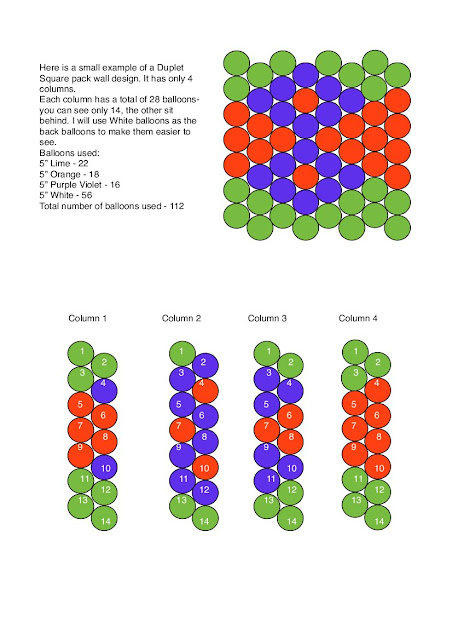Alternate Size Square Pack Walls
I love this wall type, it is robust, always looks good and is probably the most widely used method of precision wall. It is made by alternating clusters of four balloons in two different sizes packed on to 50lb Dacron line. This produces a square garland (see example below).
The first and last garland in your wall start and finish with one size of balloon cluster, the next garland starts and finishes with the alternate size of balloon cluster. The example below shows the green balloon being the bigger of the 2 sizes.
 |
| Square Garlands |
The difference in size between the two sets is relative to the size of balloon used.
2" - 4½" = use a ½"differential
4½" - 7½" = use a 1" differential
7½" - 11" = use a 2" differential
5cm - 11.5cm = use a 1.5cm differential
11.5cm - 19cm = 2.5cm differential
19cm - 28cm = 5cm differential
Practice to see which size works best for you. The garlands when built are laid side by side and interlocked, then joined together using the elastic band method (See Balloon Walls Part 1).
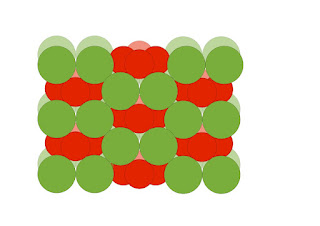 |
| Square Garlands locked together |
Consistent sizing of balloons is paramount with balloon walls, some methods are not very forgiving of badly sized balloons or inconsistent 'dupleting' of balloons. To form the duplets we must make sure that the balloons are tied as tightly together as possible, leaving no slack latex between the knot and the inflated part of the balloon.
Everyone will pack clusters on to line at a particular tension. It is usual to have only one person pack the garlands while others inflate and tie. This is not possible on large jobs, so you will need to practice consistent sizing and packing with your crew.
This method produces quite a smooth design with a flat surface, it allows for good diagonal lines and triangles. Not all balloon wall types work with different patterns!
Here are some examples of balloon wall using the Alternate Size Square Garland method:
I designed and made this wall with a group of delegates at The Qualatex Event Slovenia 2009.
Below is the same wall design but using a different colour combination, I also added a border around the edge of the design. This is a great example of a monocromatic colour harmony.
This is a great design to work on. It takes a total of 684 balloons. I have added all the details below.
2012... a year of celebrations!
2012 will see many celebrations with both the Olympics and the Queens 60th Jubilee. Some years ago I created a balloon wall replica of the Union Jack using the Alternate Size Square pack method, so here it is, I hope that you get the opportunity to try it out!
The Union jack is made up of 9 columns, each column has 33 clusters a total of 1188 balloons!
And finally, here is one of the balloon walls that I created for WBC 2012. The US Flag! Sadly, I never got a photograph of the wall, so if anyone has one please send it to me and I'll add it to this blog!
Last year I made a very large wall to frame my "Island' Sculpture at BACI, It allowed people to walk between the wall and the sculpture and made it look like they were on the Island... great for photographs!
Let me know how you get on with this type of wall, I think that you should find it a little easier than the Duplet Square pack method!
If you have any examples of balloon walls that you would like to share on my blog page please send them to me at Sue@suebowler.com
Good Luck!
Good Luck!
Sue... hope to see you soon at the World Balloon Convention!


